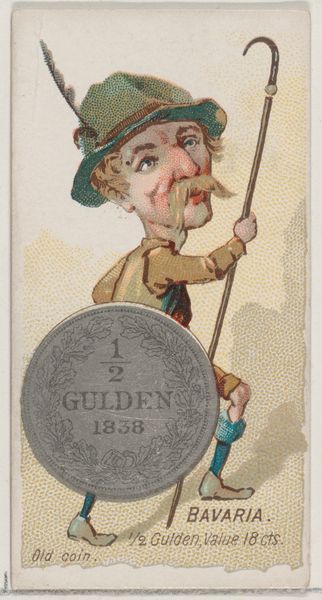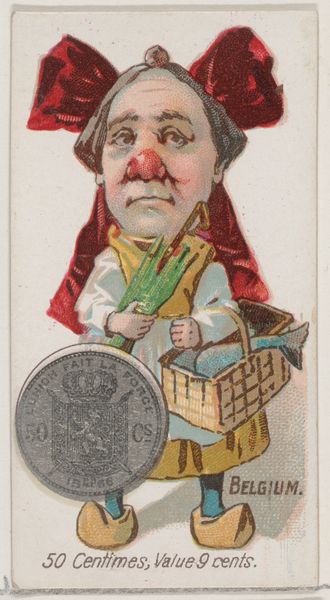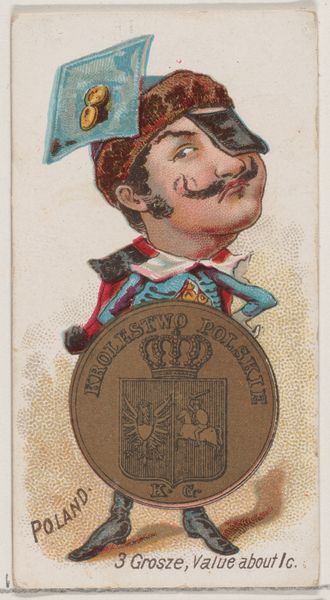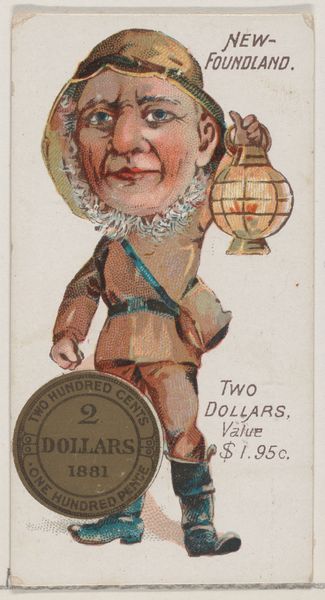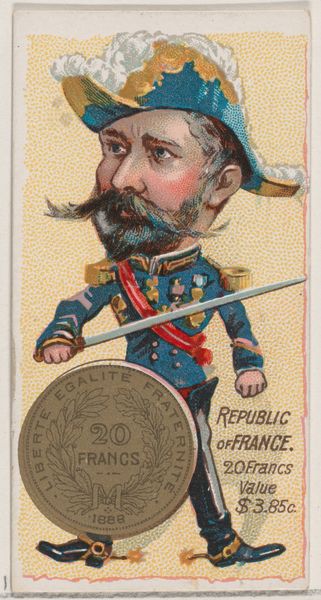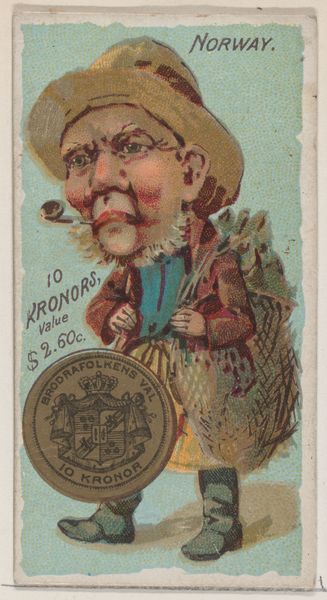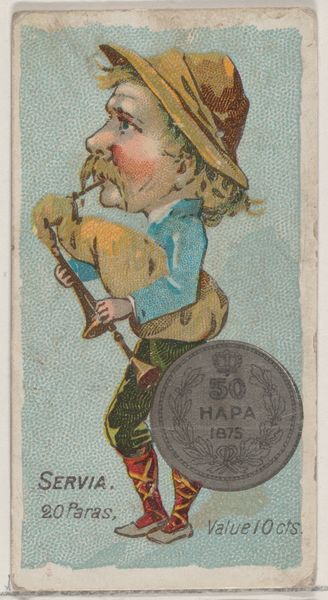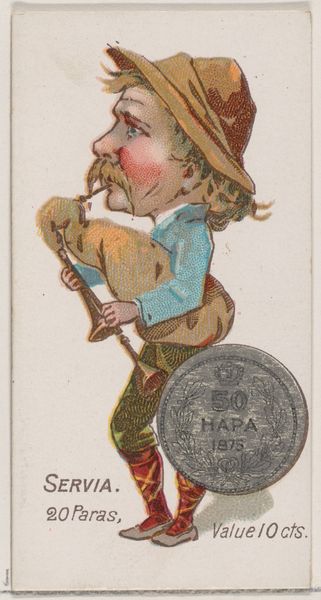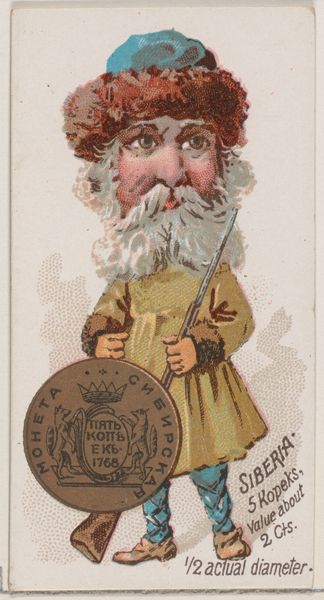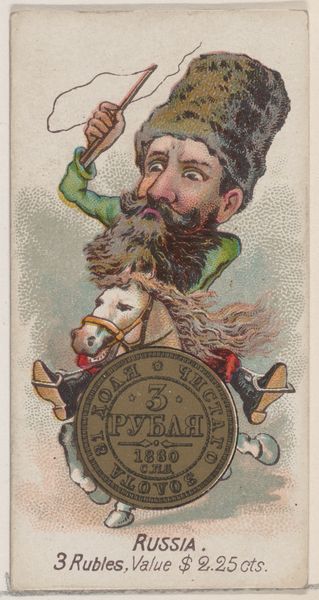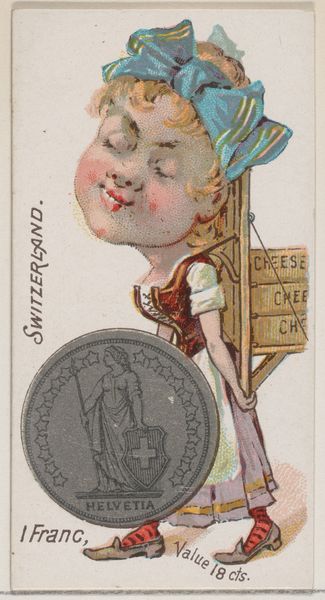
Bavaria, 1/2 Gulden, from the series Coins of All Nations (N72, variation 2) for Duke brand cigarettes 1889
0:00
0:00
Dimensions: Sheet: 2 3/4 x 1 1/2 in. (7 x 3.8 cm)
Copyright: Public Domain
Editor: This is "Bavaria, 1/2 Gulden, from the series Coins of All Nations" made in 1889 as a cigarette card for Duke brand. It's so curious how they've combined caricature with this miniature print. What do you see in this piece? Curator: I see a blatant merging of capitalist interests with cultural representation. Here we have a caricature of a Bavarian holding what appears to be a 1/2 Gulden coin. This image, mass-produced as a cigarette card, becomes a commodity in itself, directly tied to the consumption habits of the public. The means of production, lithography, allowed for cheap reproduction, further disseminating the Duke brand alongside a distorted image of Bavarian identity. Notice also the stated value - 18 cents. Where does that declared value lead you? Editor: Well, it seems to say this cigarette card, that features the old coin and the figure, it gives this small artwork worth within consumerist value - linking it, like you said, to money! Curator: Precisely. This challenges our notion of "high art." Is this art? Or just clever marketing? The labor involved in creating the image, the materials used (cardboard, ink), and the socio-economic context of its distribution point towards a deconstruction of traditional artistic value. We must also question the orientalist and exoticizing aspects, with Bavaria acting as a stand-in for the unknown "other". How do you feel all this interplay effects what's at stake? Editor: I find the way it mixes cultural symbols and everyday products kind of clever in its commentary on capitalism. Thinking about the materials and production really helps to understand its role in society back then! Curator: Yes, by focusing on the materiality and context, we can unlock new understanding of art's relationship to labor and cultural consumption.
Comments
No comments
Be the first to comment and join the conversation on the ultimate creative platform.
